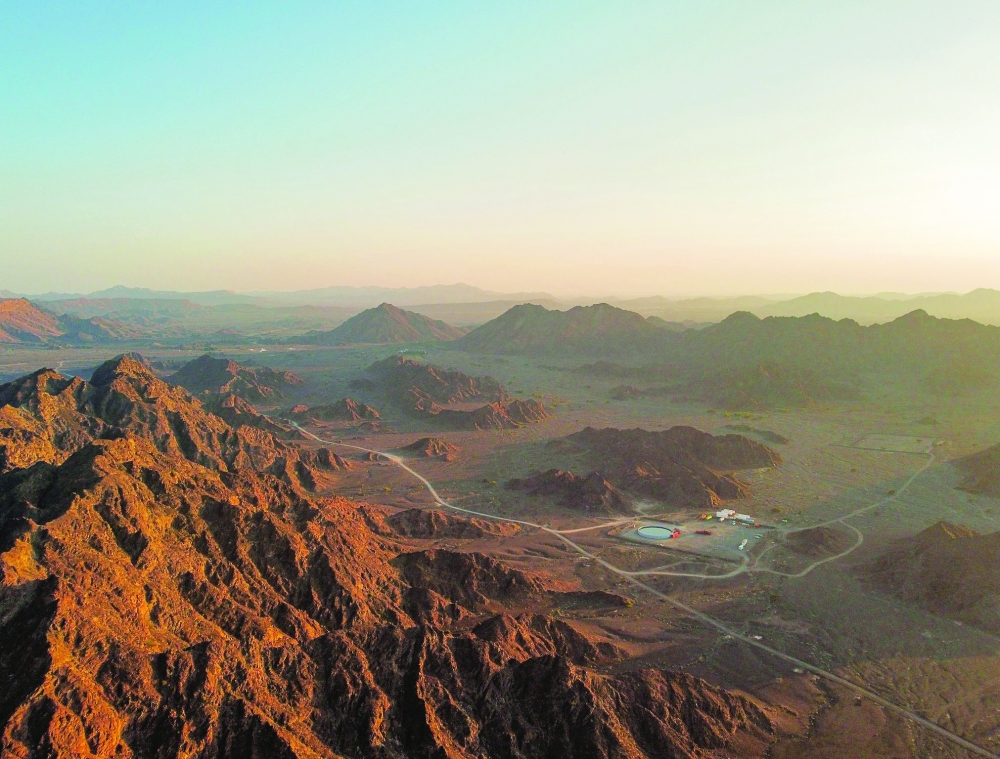44.01 launches groundbreaking climate tech project in Oman
Published: 05:01 PM,Jan 30,2024 | EDITED : 09:01 PM,Jan 30,2024


The Hajar Mountains provides a unique opportunity for the country to tap into its renewable energy potential. © 44.01
MUSCAT: Award winning Oman-based climate tech start-up 44.01 has recently announced the commencement of operations at their site in the Hajar Mountains.
With the successful drilling of their first borehole and completion of initial safety and injectivity tests, 44.01’s ambitious project marks a significant milestone for the country’s sustainable technology initiatives.
In a post, 44.01 said this groundbreaking development paves the way for Oman’s first co-located DAC (Direct Air Capture), positioning 44.01 at the forefront of environmental innovation in the region.
Recognised as the largest project to date for the company, its impact on mitigating carbon emissions holds significant promise for combating climate change.
The Hajar Mountains provide an ideal location for such a pioneering endeavour. Their geological composition, combined with strategic positioning, allows for efficient carbon capture while simultaneously facilitating the process of mineralisation.
This dual approach ensures the long-term storage of carbon emissions, minimising their atmospheric impact and maximising the potential for harnessing valuable minerals.
Expected to commence the injection of CO2 (carbon dioxide) in the latter half of 2024, the project’s timeline demonstrates 44.01’s commitment to sustainable practices while catering to Oman’s increasing energy demands. By integrating DAC technology and mineralisation, the start-up anticipates playing a key role in the country’s efforts to achieve carbon neutrality.
Last year, 44.01 completed their third pilot in Oman and their first time to use DAC captured CO2. They have also built their first site in the UAE in just nine months.
Last December, they started injecting CO2 mixed with seawater for the first time.
As global concerns about climate change continue to escalate, 44.01’s climate tech project aligns perfectly with Oman’s commitment to sustainability and ecological balance.
The venture’s strategic location within the Hajar Mountains provides a unique opportunity for the country to tap into its renewable energy potential and leverage its diverse geological landscape for sustainable development.
With the successful drilling of their first borehole and completion of initial safety and injectivity tests, 44.01’s ambitious project marks a significant milestone for the country’s sustainable technology initiatives.
In a post, 44.01 said this groundbreaking development paves the way for Oman’s first co-located DAC (Direct Air Capture), positioning 44.01 at the forefront of environmental innovation in the region.
Recognised as the largest project to date for the company, its impact on mitigating carbon emissions holds significant promise for combating climate change.
The Hajar Mountains provide an ideal location for such a pioneering endeavour. Their geological composition, combined with strategic positioning, allows for efficient carbon capture while simultaneously facilitating the process of mineralisation.
This dual approach ensures the long-term storage of carbon emissions, minimising their atmospheric impact and maximising the potential for harnessing valuable minerals.
Expected to commence the injection of CO2 (carbon dioxide) in the latter half of 2024, the project’s timeline demonstrates 44.01’s commitment to sustainable practices while catering to Oman’s increasing energy demands. By integrating DAC technology and mineralisation, the start-up anticipates playing a key role in the country’s efforts to achieve carbon neutrality.
Last year, 44.01 completed their third pilot in Oman and their first time to use DAC captured CO2. They have also built their first site in the UAE in just nine months.
Last December, they started injecting CO2 mixed with seawater for the first time.
As global concerns about climate change continue to escalate, 44.01’s climate tech project aligns perfectly with Oman’s commitment to sustainability and ecological balance.
The venture’s strategic location within the Hajar Mountains provides a unique opportunity for the country to tap into its renewable energy potential and leverage its diverse geological landscape for sustainable development.
